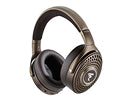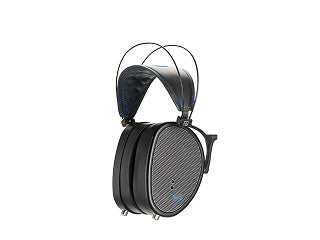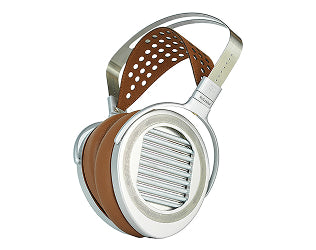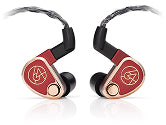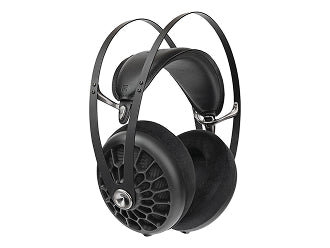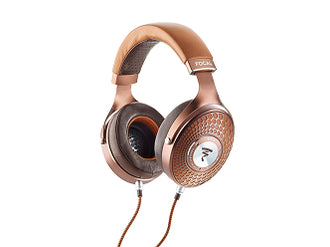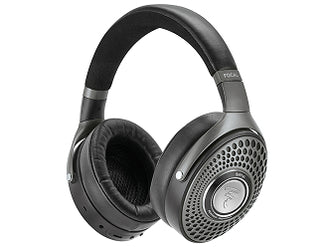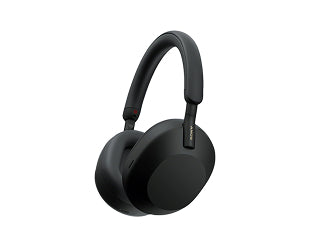Headphones
Choose headphones with high-quality sound that transform your listening experience. Every recording will feel like a live performance with the right pair of hifi headphones.
We’ve curated our collection for quality, comfort, and versatility. Whether this is your first audiophile headset or your millionth, you’re sure to have a mind-blowing experience. Browse our products below to discover what headphones can be.
The Audiophile Headphones Every Music Lover Craves
We offer audiophile headphones in every style, fit, and sound signature. We’re confident we have just the right fit for even the most discerning ears.
When it comes to recorded music, we understand hearing is believing. Stop dreaming. Come celebrate the way you listen and feel your music the way it was intended by the artists who recorded it.
Why You Need Audiophile Headphones
High-end headphones are personal audio devices. They’ve been made especially for those who appreciate the special attention to detail it takes artists to record a song. As works of art, music challenges all of us to dig deeper.
So, an even deeper appreciation for the passion poured into each composition is a right of passage. We believe it’s one that only audiophile-grade headphones can offer.
Here’s to the joy that their creations bring to our lives. Here’s to the chills we get from their works, making the hairs on the backs of our necks stand tall. Here’s to the old friend who reaches back for us with open palms.
When we fall into the troughs, our music pushes us back toward the peaks we climb. Music is kindness.
So, be kind to yourself. Treat your ears well. After all, our ears deserve the best the world has to offer.
The Top 10 Audiophile Headphone Styles
These are the top 10 headphone styles every audiophile needs in their music listening arsenal. We’d argue that you can never have too many, but that’s because not everyone listens to music exactly the same way.
Just like the musical structure of a song transitions from verse to chorus, our listening styles can change. Come celebrate the unique ways you listen to music. We think these are a great place for people who love music to begin their journey. Welcome aboard.
1. The Circumaural (or Full-Size) headphone style
Circumaural headphones refer to headphones that fit over-the-ear, surrounding the entire ear inside the headphone’s ear cup. Many refer to these as the classic “Audiophile” headphone style. They’re ideal for the audiophile wanting the most expansive sense of presentation available in a headphone style.
Full-size headphones that fit over-the-ear are the best way to fully immerse your ears with the music of your favorite artists. In this category, headphone shoppers looking for the fullest presentation of sound have options. They can choose either closed-back or open-back headphone styles.
Producing headphones with a superior soundstage is important. So is the ability to sustain the listening session comfortably without causing fatigue in the ears. Full-size headphones are often the most comfortable headphone design available. They allow audiophiles to listen for hours with little fatigue or discomfort.
The brand we recommend the most for users with larger heads is HifiMan. When it comes to Full-Size headphones, HifiMan is known for its highly flexible designs and excellent levels of comfort.
2. The Supra-Aural or On-Ear headphone style
The most fun-sounding “on-the-go” headphone style. Supra-aural refers to headphones that fit on-the-ear, resting the ear cushions the earcups directly on the user’s ears.
On-ear headphones position the drivers closer to the ears compared to full-size headphones. Being a smaller form-factor, on-ear headphones travel lighter they cannot present a soundstage that competes with larger, heavier, and sometimes bulkier full-size fit-type. This is why full-size headphones.
For some of the top on-ear headphones on the market, look at SR225X and SR325X On-Ear headphones.SR325X On-Ear headphones.
3. The In-Ear Monitor (IEM), Earphone, Earbud or Ear-Canal headphone style
The always-on-the-go headphone style for serious audiophiles who are constantly on the move.
IEM: Acronym referring to “In-Ear Monitor.” This headphone style is the most portable of all the headphone styles. That’s because of its small size, allowing it to fit inside the ear canal. There are two types of In-Ear headphone styles:
- Pre-formed “Universal" IEMs (or Earphones) - these are pre-molded to fit inside the ear canals, universally.
- Custom IEMs - custom-molded by an audiologist to fit the unique impressions of a wearer’s ear canal.
4. The Closed Back headphone style
The most “intimate” headphone style for detail-oriented music fans. This is the headphone style for music fans who want to feel the most intimately connected with their music.
The backs of closed headphones are covered (hence the name “Closed-Back”). Thus, this design generally fits into any ergonomic scenario, especially when on-the-go.
Similar to Earphones and IEMs, closed-back headphones offer a sense of presentation that’s more “narrow.” Some describe it as “in-the-head.” This can be a great feature for bass-heads. Likewise, it’s great for any application where an up-close analysis of more “forward” sounding details are desired.
Ready to upgrade to better closed-back headphones? We recommend the Dan Clark Audio E3, the Dan Clark Audio Aeon 2 Noire, and the Focal Stellia headphones.
5. The Open-Back headphone style
The “arena show” headset of the headphone world. Hands down, the de facto “audiophile” headphone style for music fans wanting to get lost, immersed, and swallowed whole by the music. This headphone style is worn by serious audiophiles.
In open-back designs, the ventilation airways allow the passage of air to move freely around the drivers. In contrast, the drivers are not ventilated in closed-back designs. That’s because the backsides of the ear-cups are covered.
Open Back headphones are best for audiophiles who listen critically at home, in private, or in professional settings. They’re superior when the tonality of a mix is crucial.
Open-back headphones present the most musical soundstage. However, since the ear cups are “open,” the sound waves produced by the drivers are exposed. So, open-back headphones generally fit into more private or secluded ergonomic scenarios. They’re best in the home or a private office.
If you’re shopping for your first open-back headphone style, don’t sleep on the Focal Clear MG. Also consider the HiFiMan Arya Organic and the Sennheiser HD660S2 Headphones.
6. The Portable headphone style
The headphone style for audiophiles who prioritize their music requirements. These are the best no matter what ergonomic scenario or destination they travel to next. Lighter and easier to transport. They’re the best choice for mobile on-the-go music enjoyment.
Head over to the Portable category and shop for all the best-sounding portable headphones on the market.
7. The Wired headphone style
The headphone style for audiophiles who are conscious of their options for complete tonal flexibility. They demand control over the most intimate (and often overlooked) connection between them and their music: the headphone cable.
Nearly all high-end wired headphones are fitted with detachable cables. Wired headphones offer the convenience of enhancing a headphone’s sound signature. You can accomplish this by switching to an upgraded headphone cable. Forget the cheaply made stock cable included with every headphone.
Headphones with wired connections give users the advantage to tailor the sound of their music even further. They take control by switching to higher-quality upgrade cables. Doing this changes the tonality and sound signature of wired headphones to suit the music and the user’s tastes on the fly.
This level of flexibility simply isn’t possible with wireless headphone styles. Not everyone listens to music in the same way, and our tastes in music are uniquely our own. This flexibility in sound signatures is a prized feature found only in wired headphones. For this reason, headphone users who are serious about the sound of their music and hearing it on their terms covet wired headphone styles.
8. The Wireless headphone style
Ahhh, the freedom from wires. The most ergonomic-friendly headphone style for music fans wanting to cut the cord and roam free from tethered connections.
This fit-type is all about the extra convenience. It’s the best for on-the-go music lovers. Limited options are available for on-the-go users who are more serious about the quality of their audio. Head over to the Wireless headphone category now for the best-sounding audiophile-grade wireless headphones.
9. The Noise-Canceling headphone style
The best headphone style for hard-working overachievers to enhance concentration or relax in therapeutic zen silence.
Shoppers of noise-canceling headphones typically fall in a different category compared to shoppers who care about great sound. These shoppers are generally more interested in solutions that help them relax, focus, or sleep. Shoppers of noise-canceling headphones are generally less interested in the quality of their audio. They’re more interested in navigating the ergonomics of their lifestyles in therapeutic silence.
Noise-canceling technology is a “bells and whistles” feature most music lovers don’t need. However, for the right ergonomic scenarios (e.g. those who travel frequently), noise-canceling headphones do come in handy. For these shoppers, Noise-canceling technology is an essential tool for anyone with an always-on-the-go lifestyle.
Manufacturers have stepped up their games when it comes to producing noise-canceling headphones for audiophiles. Current models can provide a more immersive sense of presentation.
For example, Sony recently produced its first Noise-Canceling headphones for audiophiles. Consider the Sony WH-1000XM5 Wireless Noise Cancelling Headphones. Also, take a look at the Sony WF-1000XM5 Wireless Earbuds.
10. The Gaming headphone style
This is the best headphone style for the most immersive audio experience. Gaming headphones bring the user closer to their favorite video games as they have never heard them before.
These are ideal for gamers who are serious about the immersive experience of their favorite video games. Gaming headphone styles are essential in gaining the advantage over other players in the competitive arena of online gaming.
For some of the best headphones in gaming, check out the Audeze product line. For headphones made especially for gaming, look no further than the Audeze Maxwell and the Audeze LCD-GX headphones for gamers.


